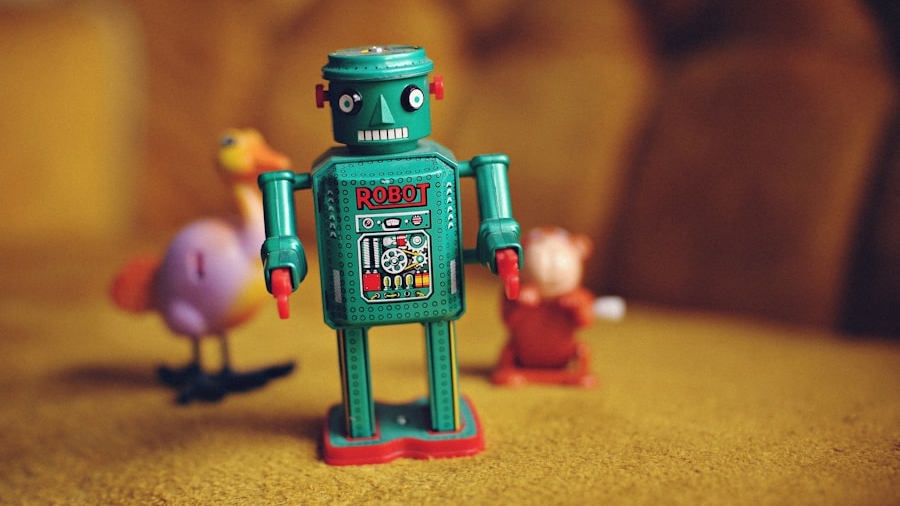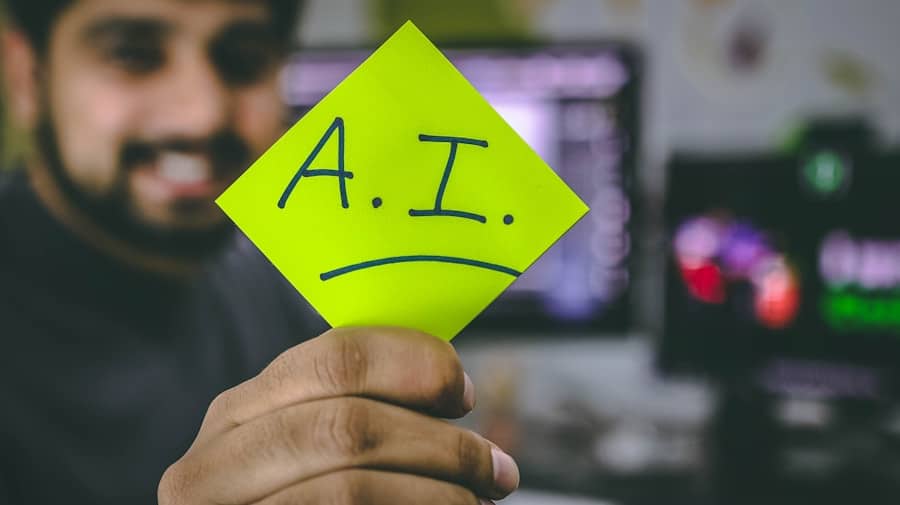In recent years, the landscape of workplace training has undergone a significant transformation, driven by advancements in technology and a deeper understanding of how employees learn. Artificial Intelligence (AI) and gamification have emerged as two powerful tools that can enhance the effectiveness of training programs. AI refers to the simulation of human intelligence processes by machines, particularly computer systems, which can analyze data, recognize patterns, and make decisions.
On the other hand, gamification involves the application of game-design elements in non-game contexts to motivate and engage users. When combined, these two elements create a dynamic training environment that not only improves knowledge retention but also fosters a culture of continuous learning. The integration of AI and gamification into workplace training is not merely a trend; it represents a paradigm shift in how organizations approach employee development.
Traditional training methods often rely on passive learning techniques, such as lectures and manuals, which can lead to disengagement and poor retention rates. In contrast, AI-driven gamified training programs offer personalized learning experiences that adapt to individual employee needs and preferences. This approach not only makes learning more enjoyable but also aligns with the modern workforce’s expectations for interactive and engaging educational experiences.
Key Takeaways
- AI and gamification are revolutionizing workplace training by making learning more engaging and effective.
- AI plays a crucial role in workplace training by personalizing learning experiences, providing real-time feedback, and automating administrative tasks.
- Gamification in employee learning and development leads to increased motivation, engagement, and retention of information.
- AI and gamification enhance employee engagement by creating interactive and immersive learning experiences.
- Successful case studies demonstrate the effectiveness of AI and gamification in improving employee training and development outcomes.
The Role of AI in Workplace Training
AI plays a multifaceted role in workplace training by providing personalized learning experiences, automating administrative tasks, and analyzing performance data to inform training strategies. One of the most significant advantages of AI is its ability to tailor training content to the specific needs of each employee. By analyzing data from various sources, such as previous training sessions, assessments, and even employee feedback, AI can identify knowledge gaps and recommend targeted learning modules.
This level of personalization ensures that employees receive the most relevant training, which can lead to improved performance and job satisfaction. Moreover, AI can streamline administrative processes associated with training programs. For instance, AI-powered chatbots can handle routine inquiries from employees regarding training schedules, course content, or enrollment procedures.
This automation not only saves time for HR professionals but also provides employees with immediate access to information. Additionally, AI can track employee progress in real-time, allowing managers to monitor engagement levels and identify those who may need additional support or encouragement. By leveraging AI in these ways, organizations can create a more efficient and responsive training environment.
The Benefits of Gamification in Employee Learning and Development
Gamification introduces game-like elements into training programs, such as points, badges, leaderboards, and challenges, which can significantly enhance employee motivation and engagement. One of the primary benefits of gamification is its ability to create a sense of competition among employees. When individuals are motivated by friendly competition, they are more likely to participate actively in training activities and strive for improvement.
This competitive spirit can lead to higher levels of engagement and a greater commitment to learning. Additionally, gamification fosters a sense of achievement through rewards and recognition. Employees who complete training modules or achieve specific milestones can earn badges or points that signify their accomplishments.
This recognition not only boosts morale but also encourages employees to take ownership of their learning journey. Furthermore, gamified training often incorporates elements of storytelling and immersive scenarios that make the learning experience more relatable and enjoyable. By transforming mundane training sessions into interactive experiences, organizations can cultivate a culture of continuous learning that resonates with employees.
How AI and Gamification Enhance Employee Engagement
The combination of AI and gamification creates a powerful synergy that enhances employee engagement in training programs. AI’s ability to analyze individual learning styles and preferences allows organizations to design gamified experiences that resonate with diverse employee demographics. For example, some employees may thrive in competitive environments where they can earn points and climb leaderboards, while others may prefer collaborative challenges that emphasize teamwork.
By leveraging AI to understand these preferences, organizations can create tailored gamified experiences that cater to various learning styles. Moreover, the real-time feedback provided by AI-driven gamified platforms keeps employees informed about their progress and areas for improvement. This immediate feedback loop is crucial for maintaining engagement, as it allows employees to see the direct impact of their efforts on their learning outcomes.
When employees receive instant recognition for their achievements or constructive feedback on their performance, they are more likely to remain motivated and committed to their training goals. The integration of AI with gamification thus creates an engaging learning environment where employees feel supported and empowered in their development.
Case Studies of Successful Implementation of AI and Gamification in Workplace Training
Several organizations have successfully implemented AI and gamification in their workplace training programs, yielding impressive results. One notable example is Deloitte University, which has integrated gamified elements into its leadership development programs. By using simulations and interactive scenarios that mimic real-world challenges, Deloitte has created an engaging learning experience for its employees.
Participants earn points for completing tasks and collaborating with peers, fostering a sense of community while enhancing their leadership skills. Another compelling case is that of IBM, which has utilized AI-driven platforms to personalize its employee training initiatives. IBM’s Watson platform analyzes employee data to recommend tailored learning paths based on individual strengths and weaknesses.
Coupled with gamified elements such as badges and leaderboards, IBM has seen increased participation rates in its training programs and improved overall employee performance. These case studies illustrate how organizations can leverage AI and gamification not only to enhance employee engagement but also to drive measurable business outcomes.
Overcoming Challenges in Integrating AI and Gamification in Training Programs
Addressing Employee Resistance
Despite the numerous benefits of integrating AI and gamification into workplace training programs, organizations may encounter several challenges during implementation. One significant hurdle is the potential resistance from employees who may be skeptical about new technologies or unfamiliar with gamified learning approaches.
Effective Gamification Design
Another challenge lies in ensuring that the gamified elements are designed thoughtfully and align with the organization’s learning objectives. If not executed properly, gamification can devolve into mere point collection without meaningful learning outcomes. Organizations must strike a balance between fun and educational value by ensuring that game mechanics are integrated seamlessly into the training content.
Collaboration for Success
Collaborating with instructional designers who understand both educational principles and game design can help create effective gamified experiences that resonate with employees while achieving desired learning outcomes. Providing comprehensive training on how to use new platforms effectively can also help alleviate concerns and foster acceptance among employees.
The Future of AI and Gamification in Workplace Training
As technology continues to evolve, the future of AI and gamification in workplace training looks promising.
For instance, VR simulations can transport employees into realistic scenarios where they can practice skills in a safe environment while receiving real-time feedback from AI systems.
This level of immersion not only enhances engagement but also allows for experiential learning that is often more impactful than traditional methods. Furthermore, advancements in machine learning will enable AI systems to become even more sophisticated in understanding employee behavior and preferences over time. As these systems gather more data on individual learning patterns, they will be able to provide increasingly personalized recommendations for training content.
This evolution will lead to a more adaptive learning environment where employees receive tailored support throughout their careers. The integration of AI and gamification will continue to redefine workplace training by creating dynamic experiences that foster continuous growth and development.
The Impact of AI and Gamification on the Future of Employee Learning and Development
The integration of AI and gamification into workplace training represents a significant advancement in how organizations approach employee learning and development. By harnessing the power of technology to create personalized, engaging experiences, companies can foster a culture of continuous improvement that benefits both employees and the organization as a whole. As we look toward the future, it is clear that the combination of these innovative approaches will play a crucial role in shaping effective training programs that meet the evolving needs of the modern workforce.
The impact on employee engagement, knowledge retention, and overall performance will be profound as organizations embrace these transformative tools in their pursuit of excellence in employee development.
In a related article, How to Choose a Laptop for Graphic Design, Enicomp discusses the importance of selecting the right laptop for professionals in the design industry. Just as AI and gamification are revolutionizing workplace training, having the right tools, such as a high-performance laptop, is crucial for graphic designers to excel in their work. By understanding the specific requirements and features needed in a laptop for graphic design, professionals can enhance their productivity and creativity in their field.
FAQs
What is AI?
AI, or artificial intelligence, refers to the simulation of human intelligence in machines that are programmed to think and learn like humans. AI is used in various applications, including workplace training.
What is gamification?
Gamification is the application of game-design elements and principles in non-game contexts to make tasks more engaging and enjoyable. In the context of workplace training, gamification can be used to make learning more interactive and motivating.
How is AI used in workplace training?
AI is used in workplace training to personalize learning experiences, automate administrative tasks, provide real-time feedback, and analyze data to improve training programs. AI can also be used to create virtual mentors or tutors for employees.
How does gamification make workplace training more engaging?
Gamification makes workplace training more engaging by incorporating elements such as points, badges, leaderboards, and rewards to motivate employees to participate and progress in their training. It also adds a competitive and interactive element to the learning process.
What are the benefits of using AI and gamification in workplace training?
Using AI and gamification in workplace training can lead to increased engagement, improved knowledge retention, higher motivation, and better learning outcomes. It can also make training more interactive, personalized, and enjoyable for employees.



